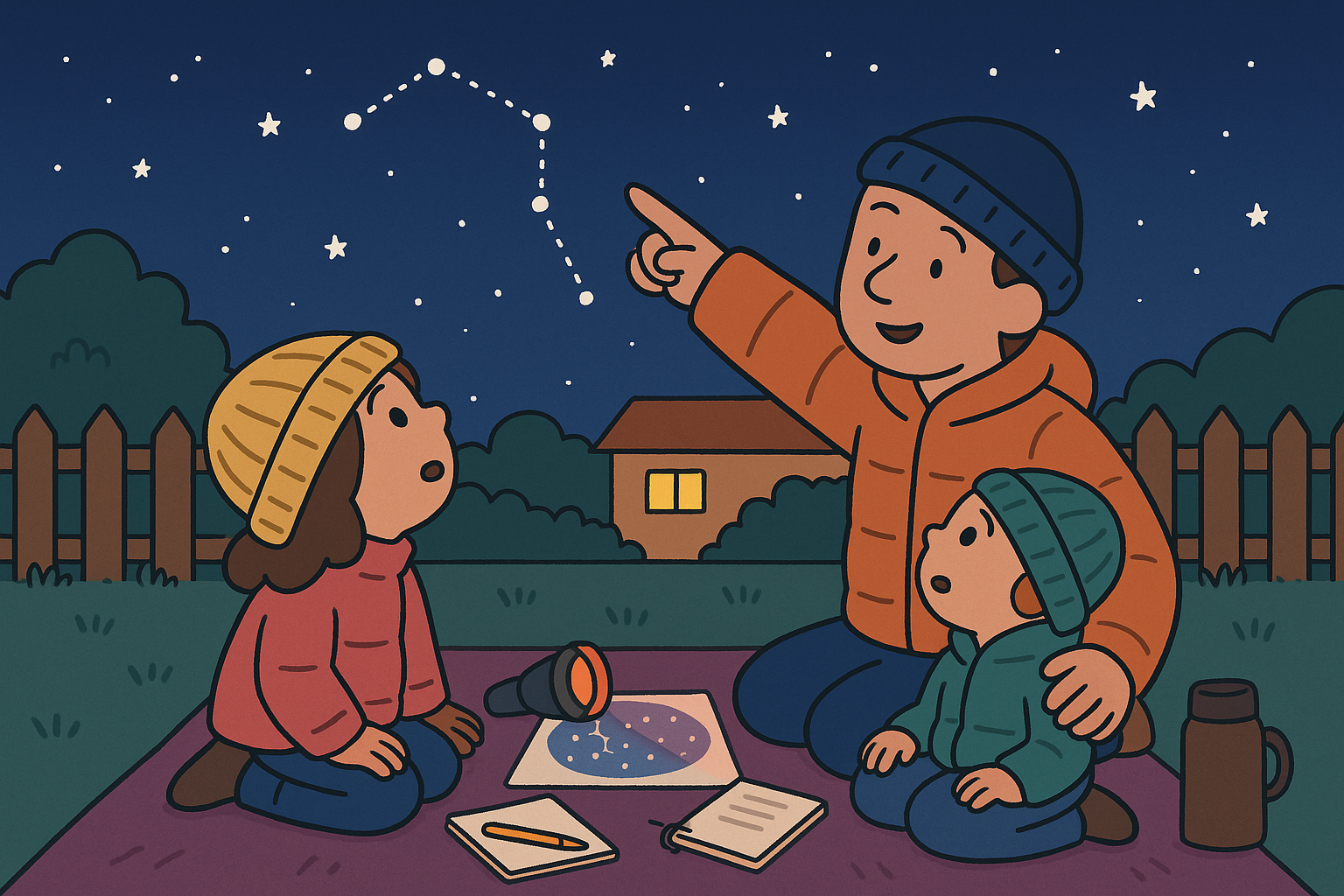Head outside on a clear evening to find a few easy constellations. This gentle activity encourages looking closely, noticing patterns, and sharing quiet moments under the night sky. It’s simple to start and easy to repeat through the seasons.
Materials (all optional)
- Simple star map or planisphere (printed or drawn)
- Torch covered with red cellophane/gel and an elastic band
- Warm clothing and a blanket or camping mat
- Clipboard, paper, and pencil
- Binoculars (optional)
- Compass or phone compass (optional)
- Stargazing app (optional)
Tools
- Scissors (to cut red cellophane)
- Elastic band or tape (to secure the red filter)
Steps
- Pick the night: Choose a clear evening and a spot with as little light as possible (garden, park, balcony). Bring layers and a blanket.
- Make a red torch: Cover a torch with red cellophane so eyes stay adjusted to the dark.
- Let eyes adjust: Sit quietly for 5–10 minutes. Count how many stars become visible as your eyes adapt.
- Start with simple shapes: Use the map to find easy patterns first—The Plough (part of Ursa Major), Cassiopeia’s “W”, and Orion in winter. Trace the shape in the air with a finger.
- Join the dots: On paper, sketch the stars you see and lightly connect them. Compare with the map and label the constellation name.
- Spot-and-match game: Give a “shape clue” (e.g., “three stars in a row”) and see who can find it. Swap roles.
- Wrap up: Note the date, time, and what you spotted. Plan another mini-session to look for a new pattern.
Variations
- Window Watch: If it’s too cold, turn off indoor lights and spot constellations from a window.
- Cardboard Sky: Draw 3–4 bright stars on black card with chalk, pierce small holes, and shine the torch from behind to practise indoors.
- Make a Star Wheel: Create a simple paper planisphere to learn which constellations are up each month.
- Myth Makers: Invent a new constellation and a short story explaining how it came to be.
Why It’s Great
- Curiosity about nature – Encourages questions about the world beyond us.
- Calm focus – Quiet, screen-free time that builds attention and patience.
- Memory & patterning – Noticing shapes helps with visual memory and spatial skills.
- Family connection – A shared routine that feels special and cosy.
Safety Tips
- Choose a safe, familiar spot away from roads and water; set clear boundaries in the dark.
- Dress warmly and bring hot drinks; stop if anyone feels too cold or tired.
- Use the red-filtered torch to see maps without dazzling eyes.
- Supervise closely at night; keep the session short for younger children.


Leave a Reply